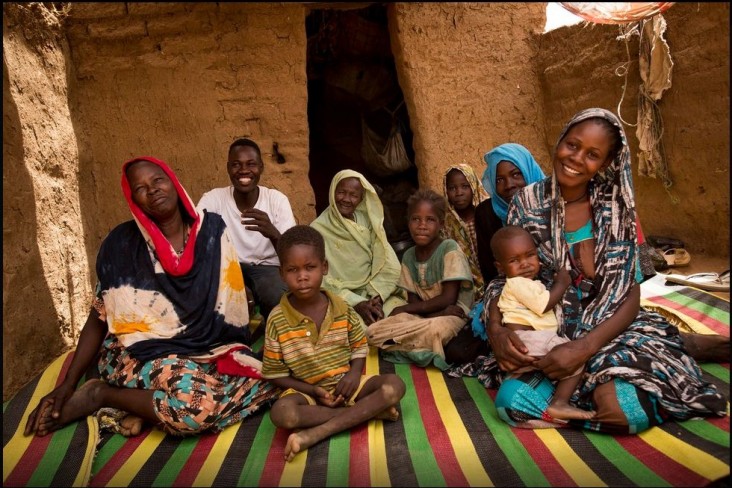Speeches Shim

May 2017—As the Islamic holy month of Ramadan approaches, Khadija Abdallah Aboh prepares to observe the holiday with her family in Zam Zam Camp in North Darfur, Sudan. Aboh first moved to the camp over 12 years ago, fleeing violence in her village elsewhere in Darfur. While she intended to stay in the camp temporarily, ongoing violence and insecurity have prevented her return for more than a decade.
Meanwhile, Aboh has tried to make a home for her aging mother and her children, including cooking them healthy meals all year—especially holiday meals during Ramadan—using basic food items provided by USAID.
In Sudan, meals during Ramadan usually include special dishes. Sudanese typically enjoy iftar, the meal breaking the daily fast, outside their houses, sharing it with neighbors or those less able to afford food.
While life in the camp is difficult, important events in Aboh’s life have taken place since she moved there—the birth of three children, the wedding of her eldest daughter and the birth of her first grandchild. Throughout her life in the camp, Aboh has remained thankful for the humanitarian assistance that feeds her family and supplements the modest income earned by her husband, who braves the threat of conflict to work elsewhere in Darfur, as he is unable to find work at Zam Zam. He is only able to visit his family once a month.
“It is not ideal,” Aboh says, “but this was the best way we could manage as the conflict repeatedly erupts there. My husband makes it a point to come home and join us for iftar on the first day of Ramadan. So I always cook his favorite food, like asida (millet porridge) and mullah (a type of stew), and prepare abre (a drink made of dried sorghum).”
Aboh is one of the 4.8 million people in need of humanitarian assistance in Sudan, including 2 million internally displaced persons in Darfur. The Zam Zam Camp alone houses over 100,000 displaced people from various areas of Darfur. Malnutrition is common in displaced communities and 2 million Sudanese children under age 5 are acutely malnourished. Malnourished children are more susceptible to disease and often suffer from stunted growth and development.
To fight hunger and malnutrition in Sudan, USAID partners with the U.N. World Food Program and UNICEF. Since 2013, USAID has provided more than 600,000 metric tons of urgently needed food assistance to hungry families in Sudan, including a recent shipment of over 47,000 metric tons of U.S.-grown sorghum—enough grain to fill over 23 Olympic-size swimming pools. This shipment arrived in the country’s largest seaport—Port Sudan—on April 16, before being donated to the World Food Program, which distributes the food aid around the country to families in need.
USAID complements this assistance with food purchased locally and voucher programs that help families afford nutritious food available in local markets. In addition to fighting hunger and malnutrition, this market-based assistance supports Sudanese farmers and vendors.
While this year will mark another Ramadan away from home, Aboh dreams of a returning to her village. “I pray for peace to return to our village so we can visit and celebrate Ramadan there,” she says.
LINKS
Follow @USAIDFFP, @USAIDSudan, on Facebook

Comment
Make a general inquiry or suggest an improvement.